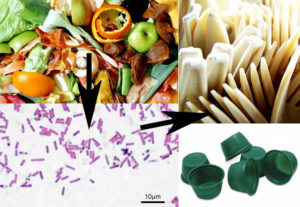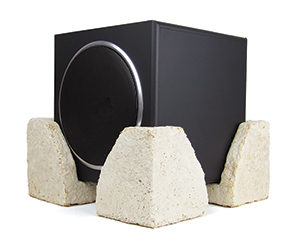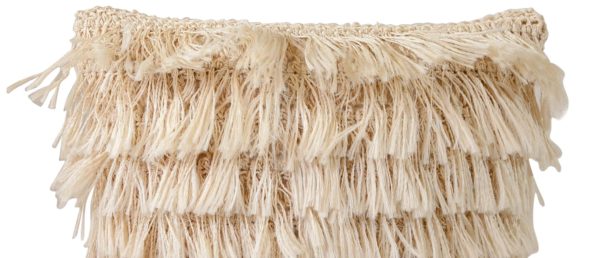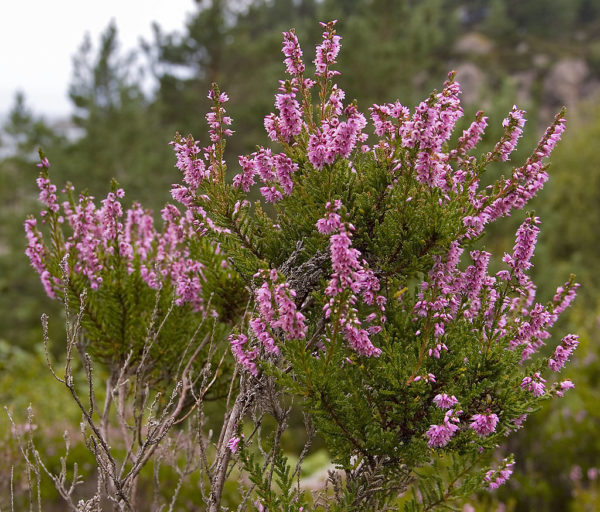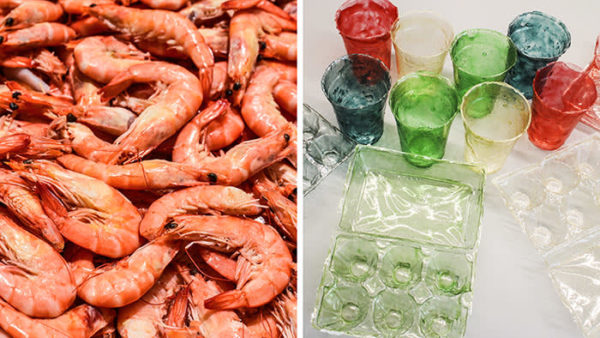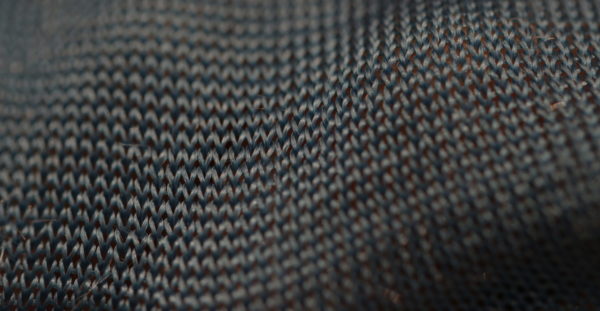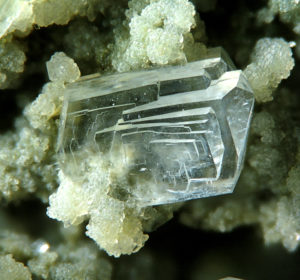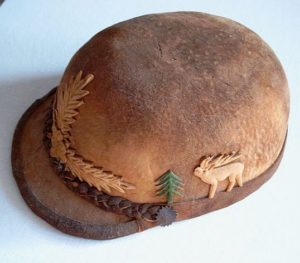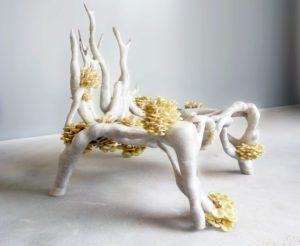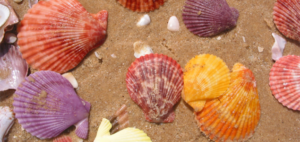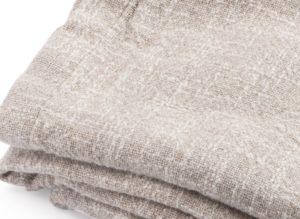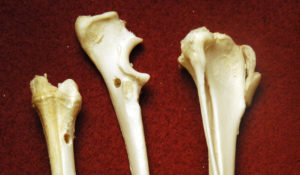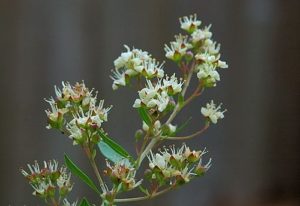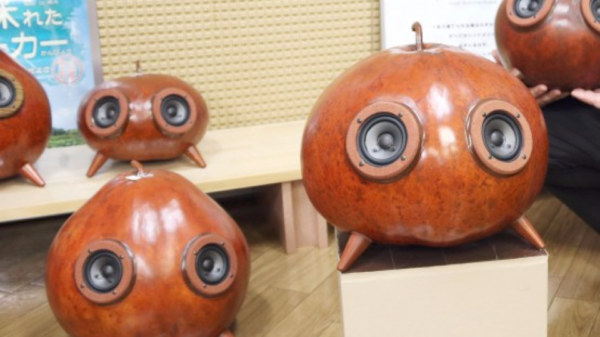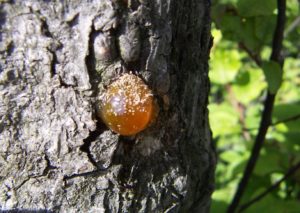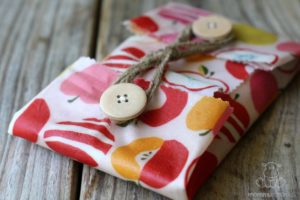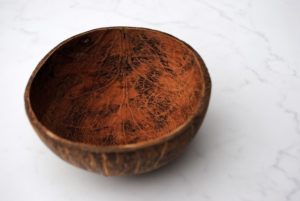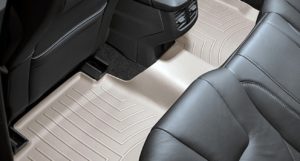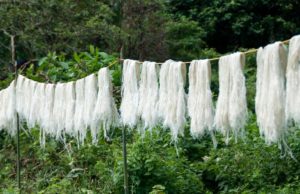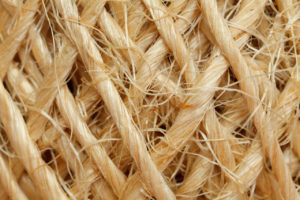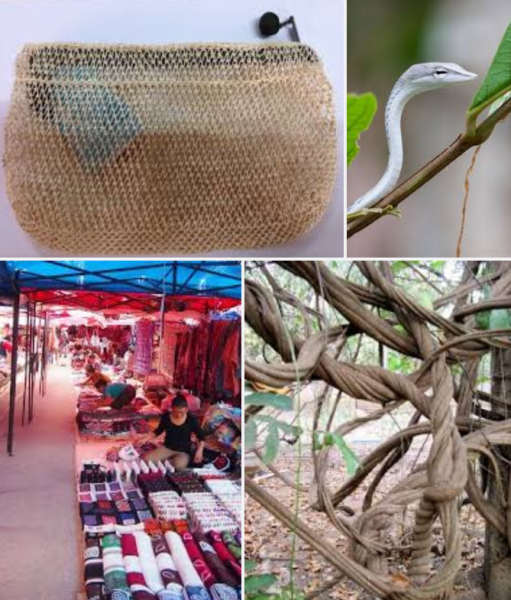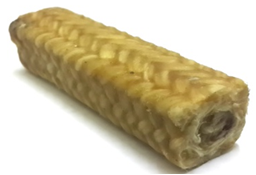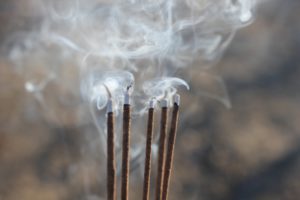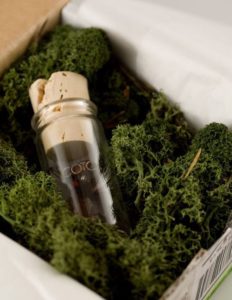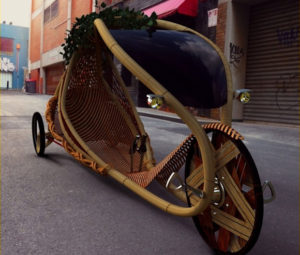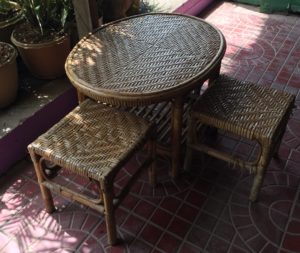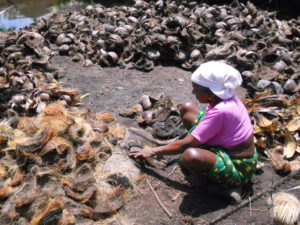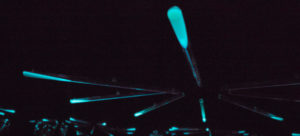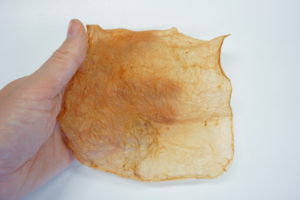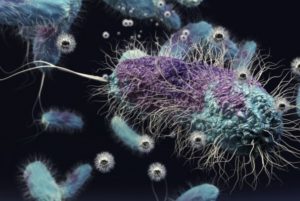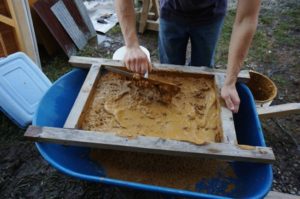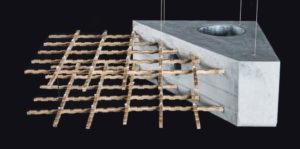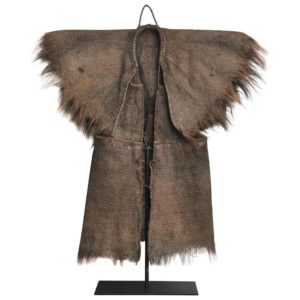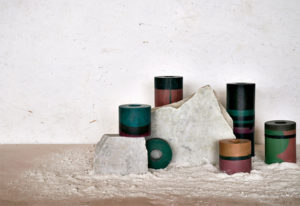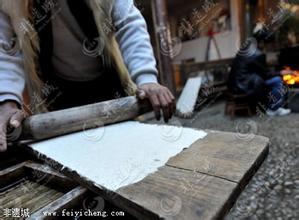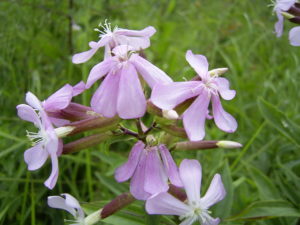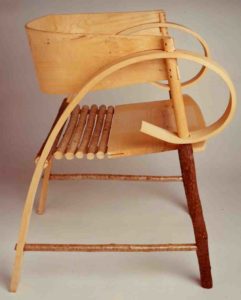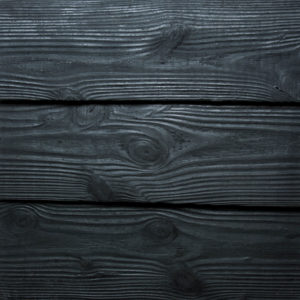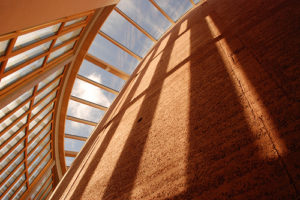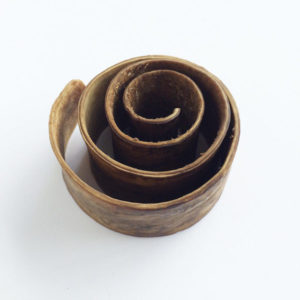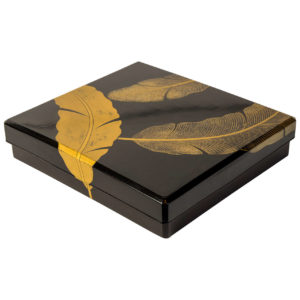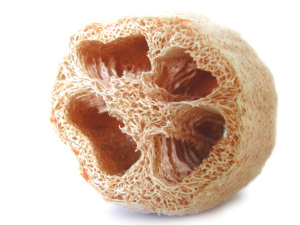NaturalFactory.org showcases natural materials and processes to inspire designers. We’re volunteers, and welcome your suggestions.
PHA: Plastics from microorganisms
Polyhydroxyalkanoates are biodegradeable polymers produced by microorganisms such as bacteria, and can used in the production of bioplastics for industrial films, food packaging, toys etc.
DNA Data Storage
DNA is nature's permanent data storage, with woolly mammoth DNA being readable after 60,000 years. It is extremely dense (able to encode the entire internet in a shoebox!) and uses little power to maintain
Mycelium Foam
Mycelium, the vegetative part of a fungus or fungus-like bacterial colony, consists of a mass of branching, thread-like hyphae. By growing this around a food source such as agricultural by-products, in a mould, a durable material similar to polystyrene can be grown to a desired shape.
Tree Shaping
Tree shaping is the art of manipulating the growth of trees to design them into a useful product. This can be done through various methods including simply guiding the direction of growth, grafting or aeroponic culture of roots.
Snake Plant fibres
A soft, silky and elastic fibre is obtained from the leaves of the Sansevieria plant.
Calluna Heather
Calluna vulgaris (common heather, ling), a perennial shrub found widely in Europe and Asia Minor, has been used for dying wool, tanning leather and making brooms.
Linoleum
Lino is a natural composite of linseed oil, pine rosin, natural fillers and natural fibre, commonly used for flooring, wall covering and print-making
Biofabricated Leather
Biofabricated leather is created from small samples of living animal skin cells, multiplied in bioreactors and 'printed' into sheets, which can be tanned and used like normal leather, grown to larger sizes, or even bioengineered for new properties
Chitosan Bioplastic (Shrilk)
A fully degradable bioplastic laminate of shrimp shell chitosan and silk fibroin protein, heralded as an exceptionally strong, biocompatible, cheap, environmentally safe alternative to plastic.
Yeast Protein ‘Silk’ Fibres
Bioengineered yeast is fermented to create proteins like those found in spider or silkworm 'silks', which can be spun into ‘soft yet durable’, biodegradable fibres
Clinoptilolite
Clinoptilolite is a white to reddish natural crystal of zeolite, made of silica and alumina tetrahedra, often occuring in volcanic ash rocks.
Shellac from Insects
Shellac is a resin secreted by the female lac bug, on trees in the forests of India and Thailand. It is processed and sold as dry flakes and dissolved in ethanol to make liquid shellac, which is used as a brush-on colorant, food glaze and wood finish.
Amadou: mushroom ‘felt’
Amadou is a spongy material from Fomes fomentarius fungi, historically used as fire tinder and for forming a felt-like fabric. It absorbs water and is still used in fly fishing for drying out flies.
3D Printed Mycelium
Mycelium, the vegetative part of a fungus or fungus-like bacterial colony, can be mixed with a liquid food source and fed into a 3D printer to create forms which continue to grow, and strengthen, until deactivated through heating or drying.
Seashells
Seashell usually refers to the exoskeleton of an invertebrate, and is typically composed of calcium carbonate or chitin.
Linen
Linen is a natural fibre derived from the flax plant. It is one of the oldest textiles of the world. The linen fabric has a coarse structure which makes it a cool and fresh fabric, comfortable to wear in hot weather.
Bamboo Fabric
Bamboo fibres can be used to create a textile fabric with multiple uses from ordinary clothing to a dish cloth. This fabric is naturally antibacterial and is soft, feeling like a cross between cashmere and silk.
Animal Bones
Animal bones have numerous uses including as a component of porcelain, glue, gelatin and black pigment.
Cork
Cork is an age old material with excellent properties including being an impermeable buoyant material, compressible, good insulator and fireproof. It is increasingly used as a building material e.g. flooring.
Henna
Henna, a versatile plant in terms of its applications, is typically and widely used in India since antiquity, to dye skin, hair, fingernails and fabrics such as silk, wool and leather.
Bottlegourd/ Calabash/ Hulu
Calabash has long been used as a container and musical instruments, for instance Chinese folk instrument cucurbit flute (hulusit).
Vegetable Glues and Gums
Vegetable adhesives come from a variety of sources: vegetable starch or sections and leguminous protein (also called vegetable casein). The starch based glue can be produced from many common plants including wheat, cassava, potato, rice and corn.
Beeswax
Beeswax (cera alba) is a natural wax produced by honey bees. It has been used for centuries, notably as a candle and sealing wax. The featured image shows a contemporary use for a packaging wrap by coating cotton with beeswax, jojoba oil and tree resin.
Cactus Wood
Found under the skin of the plant, cactus wood is hidden behind cacti’s layers of spines which provide protection from animals and the sun. The wood is used for furniture.
Coconut Shell
The Coconut shell is useful both in its raw and powder form. Coconut shell carbon can be used as an air and water purifier.
Banana Leaf Stem Fibres
Banana plant stems contain a lignocellulosic fibre which has been used for matts, fabrics, wadding and baskets, and is gaining attention as a potential reinforcement for engineering composites.
Pineapple Leaf Fibres
The pineapple leaf contains fibres that can be woven into a fabric. The result is a glossy, ivory colored, silk like though stiffer fabric. Developed in the Philippines it is now of interest as an alternative to silk and even leather.
Sisal Fibres
Sisal leaf produces a stiff fibre that is recognised for its strength, durability, ability to stretch, affinity for certain dyestuffs, and resistance to deterioration in saltwater. Dominant use is agricultural rope however it has countless applications including carpets, textiles, insulation (as a composite) and paper.
Piet Vine String
Pueraria phaseoloides? Used in Northern Laos for string bags Uses Potential Uses Processes More Information Posted onMay 3, 2018CategoriesGrown-Material, IncompleteEdit
Hemp fibres
Hemp bast fibres (from the bark) are from a plant that grows readily in most climates. It's countless uses include fabric for textiles, rope, sailing canvas, paper and jewellery. It has also been tested as an insulating building material by combining with lime into a plaster
Ramie Plant Fibre
Ramie fibres, from the stem of a plant in the nettle family, growing 1-2.5 m tall and native to eastern Asia, have been used for fabric, string and rope, bowstrings, and more recently as reinforcement in polymer composites.
Tout tiang bark glue
Tout tiang bark produces a glue when crushed which is typically used for making incense sticks
Reindeer Moss
Reindeer moss can be used dried for decoration, crafts and as an alternative to bubble wrap in packaging
Candelilla Wax
Candelilla wax is derived from the waxy layer of the Candellila shrub leaves. It grows in arid areas of Northern Mexico and Southwestern United States. The wax is used in cosmetics, electronics, foods (e.g. Chewing gum), paints, sealing waxes, dyes etc.
Bamboo
Bamboo, both as whole culms and shaped bulk material from the culm walls, has many uses throughout native growing areas where it is quick growing and easy to work with; from building structure and scaffolding to smart phone cases.
Rattan
Rattan is a plant similar to bamboo found in the rainforest which is light, durable and flexible. It is widely used in furniture and handcrafts either woven or as is.
Rice Straw
Straw is an agricultural by-product, the dry stalks of cereal plants, after the grain and chaff have been removed. Straw makes up about half of the yield of cereal crops such as barley, oats, rice, rye and wheat. Straw used to be a by-product of cereal plant and have multiple use in farm industry … Continue reading "Rice Straw"
Arecanut Palm Leaf pressed shapes
Leaves fallen naturally from the Arecanut palm tree can be heat-pressed into 100% biodegradable items such as plates, bowls and cups, with no adhesive or coating required.
Kapok
Kapok is a cotton-like fluff. Good material for upholstery due to the light and airy fibers. The natural wax coat of the fiber makes them water resistant.
Coir fiber
The coconut palm is a tropical tree from the palm family, where the coconut grows. Coir, the coconut fibers are tiny curled tubes filled with air, this makes them light, heat-retaining and elastic.
Bioluminescence
Bioluminescent bacteria are being explored as a potential source of non-electrical lighting.
Bacterial Cellulose (Kombucha/Nata de coco)
Bacterial cellulose grows on the surface of Kombucha / Nata de coco, and has been used to create leather-like fabrics. It is highly moisture absorbing.
Bacterial Synthesis of Nano-Metals
Bacterial production of nano-metals is a growing field of research because of its advantages over current chemical or physical manufacture processes.
Clay based paint
Clay based paint is a natural, breathable and zero volatile organic emitting paint. It is perfect for use in interior rooms and certain versions are suitable for humid areas such as kitchens and bathrooms.
Bentonite Clay Toothpaste
Naturally created fine bentonite clay has a fairly ideal abrasion hardness for cleaning teeth without damaging enamel.
Woven-Strand Bamboo (WSB)
A composite of carbonized bamboo strands compressed with water-based adhesive has three times the density of natural bamboo, resists moisture absorption, swelling, and decay from bacteria and fungi.
Palm Trunk Fibres
Certain palm trees have thick fibrous bark that can easily be peeled off and used directly or with minimal processing as a fabric.
Soapberry (Soapnut)
These contain saponins which are a natural surfactant, and have been used for washing the body, laundry and dishes where they grow in Asia and the Americas.
Pine Resin + Rock Dust Composite
Pine resin can be used as the matrix (glue) with rock dust (such as marble dust) to produce a durable and aesthetic composite.
Basalt Rock Fibres
Basalt rock, molten at 1400°C, can be extruded into fibres which float on water, have high elasticity, and a tensile strength over twice that of steel.
Dongba Paper
Dongba paper is made from the Canescent wikstroemia using a traditional low energy process. Properties of this material include being strong, mothproof and resistant to decay.
Soapwort
Soapwort is a plant that can be been used to make liquid soap; for body and fabric washing; simply by soaking or boiling the leaves or roots in water. Nowadays the soapwort is only used to clean antique tapestries.
Clay-Dung Plaster
Finishing plaster made from fine clay and cow dung has a pliable, fibrous texture and can be used inside or out: around doors and windows.
Green Woodworking
Green woodworking, using unseasoned timber, benefits from using nature as the factory to a greater extent than 'conventional' carpentry.
Bioplastic
Bioplastics can be a 'best of both worlds' solution; the consistent properties of plastic but with naturally sourced raw materials and biodegradable at end of use.
Charred Wood
Charring is a natural means of creating a more durable wood surface through improved fire, rot and insect resistance.
Compressed Earth
A building material made from earth and often organic material. Adobe means mudbrick in Spanish, but in some English speaking regions of Spanish heritage it refers to any kind of earth construction.
Desert ‘Soil’ with Liquid NanoClay
http://www.bbc.co.uk/news/business-43962688 Uses Potential Uses Processes More Information
Mycelium 'Leather'
Production of this material is similar to making ravioli from scratch, and the final product is more resilient than cement.
Flax
Plant, Harvest and Process Flax Plants Into a Sturdy Primitive Bowstring Uses Potential Uses Processes More Information [e.g. ExampleOrg … Continue reading "Flax"
Latex Rubber from Plants
Natural rubber is used extensively in many applications and products, either alone or in combination with other materials. In most of its useful forms, it has a large stretch ratio and high resilience, and is extremely waterproof.
Lacquer from Trees
Sourced from dried tree resin, Chinese Lacquer durable and glossy finish.
Natural enzyme ‘eats’ PET plastic
“Researchers from Britain’s University of Portsmouth and the US Department of Energy’s National Renewable Energy Laboratory (NREL) made the discovery while examining the structure of a natural enzyme found in a waste recycling center a few years ago in Japan. They say the enzyme, Ideonella sakaiensis 201-F6, is able to “eat” polyethylene terephthalate, PET, which … Continue reading "Natural enzyme ‘eats’ PET plastic"
Leaf Fibre + Plant Tannin Composite
A natural composite with properties comparable to sheet plastic. Historically made for Katagami, the traditional Japanese craft of making paper stencils for dyeing textiles.
Luffa
A fibrous sponge produced by a simple drying process from a member of the cucumber family, and may be used as a cleaning sponge, and possibly in packaging, sound/vibration absorption, or as a matrix in natural composites.
